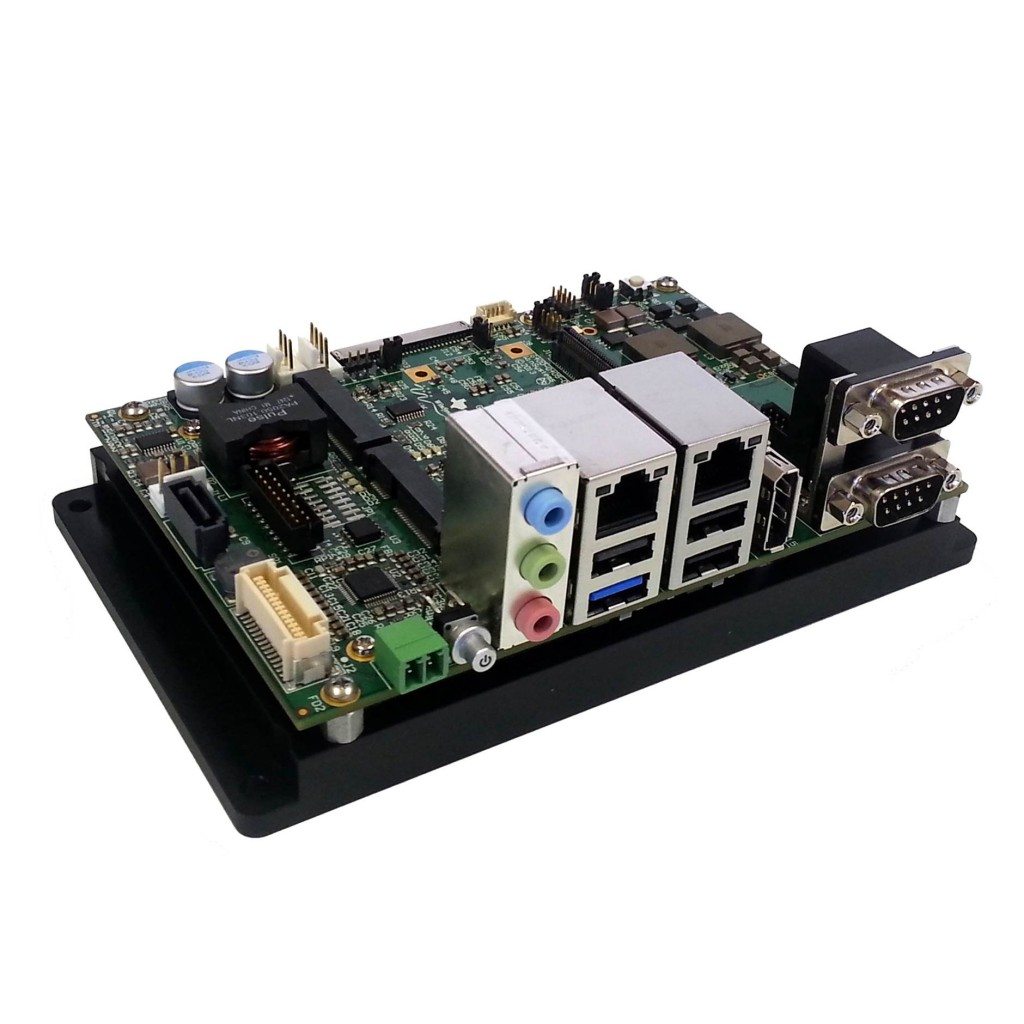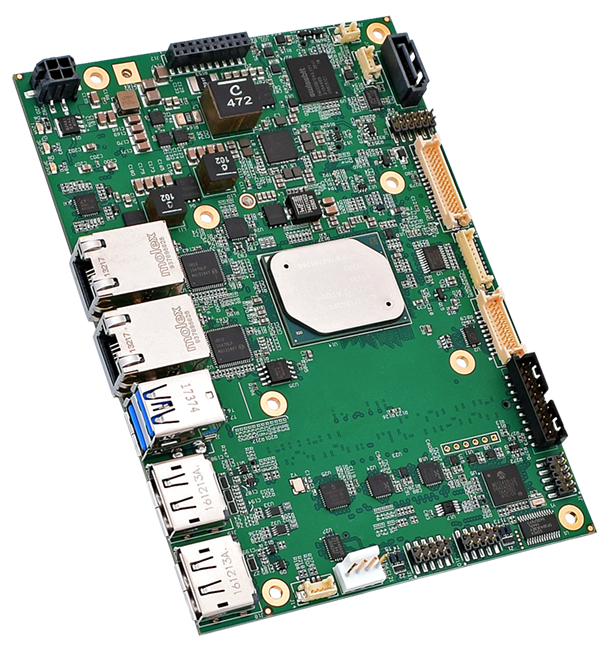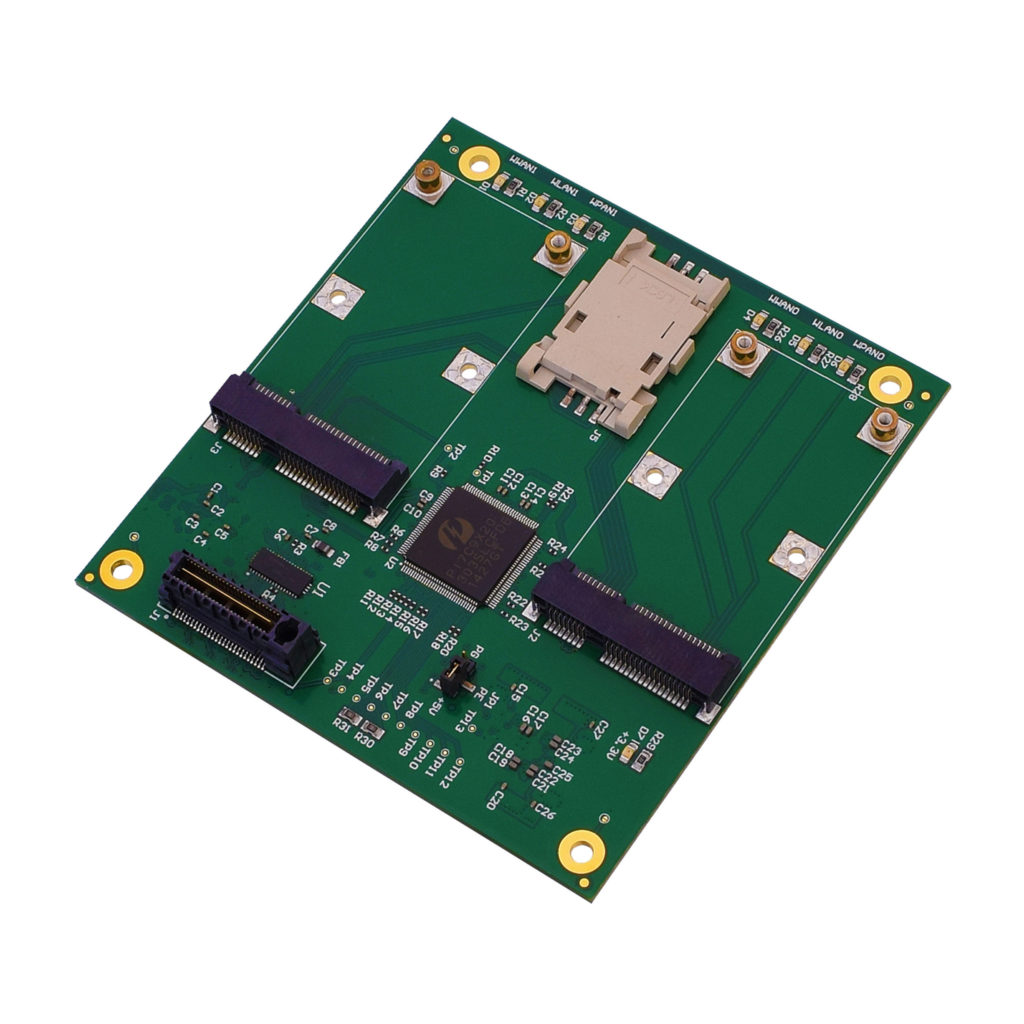
The number of application spaces being empowered by intelligent embedded systems continues to grow, from robotic drones to smart homes, to Cloud-enabled shipping containers. Embedded computers are a key part of these systems, and they’re available in many flavors. Two of the more popular varieties are single-board computers (SBC) and computer-on-modules (COM). But how do you choose which is best for your application?
An SBC is pretty much what it sounds like, a board that has all the computing functionality required to make up a complete system. Just insert it into a case, add a power supply, and you’re basically done. A COM is a subtype of an SBC, as it contains some, but not all of the functionality of the full-blown computer. In many cases, the COM would reside on a baseboard, thereby making up a quasi-SBC. The advantage of the latter configuration is that it can be further customized using a specific microprocessor. It also can lead to easier upgrades, as just the COM could be replaced while maintaining the components on the base board. In most cases an SBC is smaller than a COM because the former eliminates the need for a connector between the COM and the baseboard. Eliminating the connector results in both space and cost savings.

Each design offers particular advantages due to the nature of its construction. The quasi-modular aspect of a COM-oriented design is useful to those making a line of scaled products. This is because the ability to swap out some parts of the system enables different levels of functionality between an entry-level product and a feature-rich top of the line model. Each level of product could have its own set of peripherals that would be swapped out as the product offering progressed upwards (or downwards) in functionality.
Using a COM module enables more flexibility to choose within a processor family, and its quasi-modular nature makes it easier to create a carrier-oriented design. The ability to swap out various solutions for either evaluation, upward migration, or scaled deployment gives manufacturers a lot of flexibility. Care should be taken when using a COM with other devices in the same system, as there can be compatibility issues between modules and/or manufacturers due to optional pins, BIOS, or other cross-platform factors.

Alternatively, an SBC gives a manufacturer a compact package that requires less space, saves money, and can be more easily ruggedized or otherwise specialty-packaged. When CPU swapability is not a desired feature, typically the SBC integrates everything that’s needed, saving space, cost, and inter-subsystem connection issues. Case in point is the WINSYSTEMS SBC35-427, aimed at industrial applications.
Customization, including I/O, for SBCs like the SBC35-427 can come through the use of modules like the WINSYSTEMS PX1-I416 module, which adds Mini PCI Express expansion capability to embedded systems using PCle/104 OneBank expansion. The module’s onboard PCIe and USB multiplexer ensures maximum utilization of the host platform’s PCI Express and USB resources.

Both types of computers have their advantages and disadvantages, and properly selecting the right solution for your application will deliver significant benefits. Whether you choose an SBC for its all-encompassing nature or a COM for its modular aspects, you will be able to get the computing horsepower you need to address your application, and the peripheral functionality that’s required to serve it.
